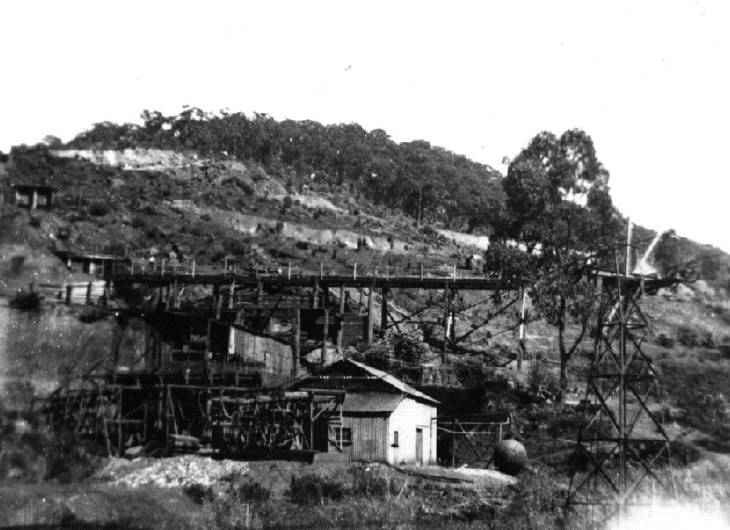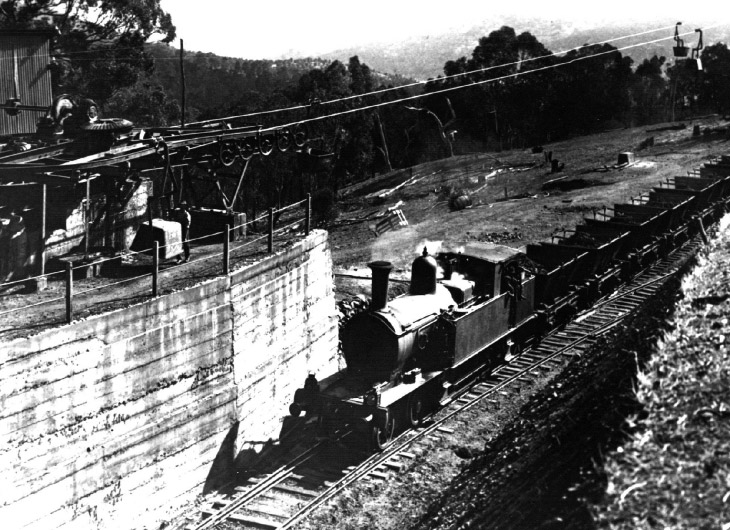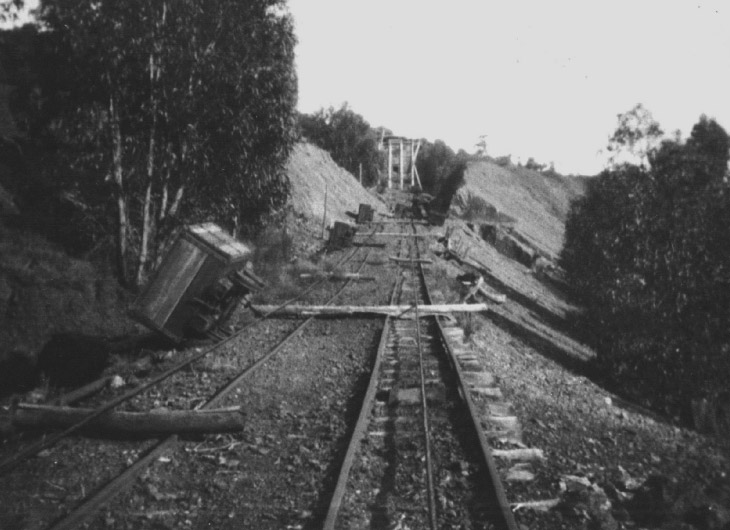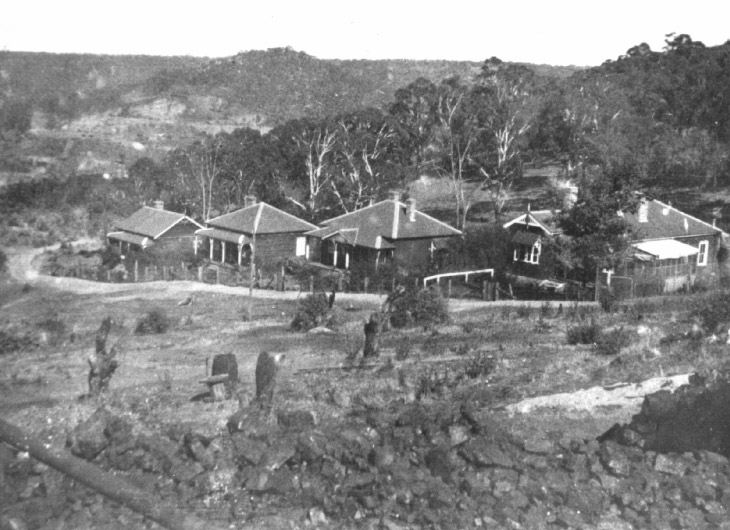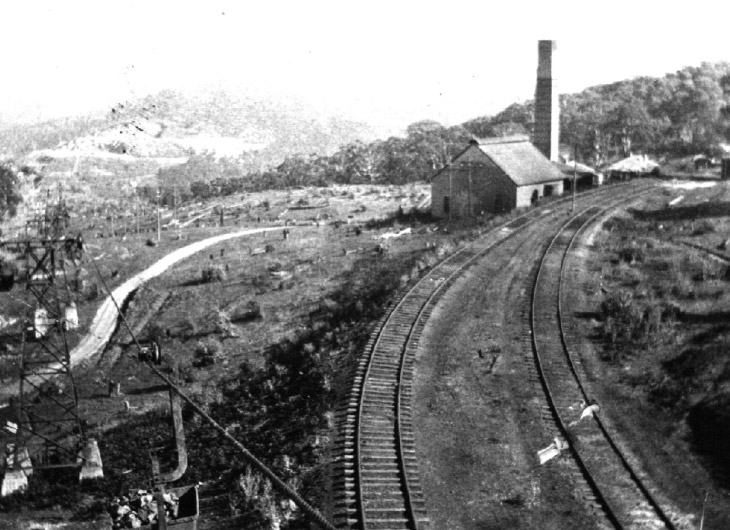Historical Timeline
- 1820s to 1840s
- 1850s
- 1860s
- 1870s to 1890s
- 1900s – 1940s
Iron Ore Quarrying G&C Hoskins 1919-1928
The presence of a large body of iron ore at the Iron Duke had been widely known since 1901, when Jaquet described it as the most extensive deposit in the state. William Sandford Ltd, the builders of the steelworks at Lithgow, had taken a lease from the Cadia Copper Mining Company to mine the ore on the Iron Duke lode, but had not used it. G & C Hoskins, who took over the Sandford Works, made arrangements to mine the Cadia iron ore. A sub-lease for £1,000 per annum with a royalty of 6 d per ton was signed with the Cadia Copper Mining and Smelting Company.
By 1919 the railway from Spring Hill was complete and G & C Hoskins had also built a powerhouse and aerial ropeway to directly connect the quarry with the rail sidings. About 130 men were employed. In 1921, G & C Hoskins was the sole producer of pig iron (990,053 tons) in New South Wales, obtaining ore from their quarries at Coombing Park, Cadia, Breadalbane and Tallawang. On 10 March 1921, an accident with explosives killed nine men out of a total workforce of 160 men at the Iron Duke Mine.
By 1927 only the quarry at Cadia was open, the other quarries having been closed down and machinery removed. In November 1928 the blast furnace at Lithgow closed and operations were transferred to Port Kembla. The transfer to Port Kembla put 200 men out of work at Cadia.
